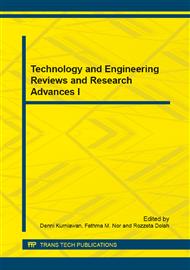p.149
p.154
p.159
p.163
p.168
p.177
p.182
p.186
p.190
Comparative Study on Design of Experiment in Frequency-Based Response Surface Methodology for Damage Detection
Abstract:
This paper investigates the performance of design of experiment (DOE) in response surface methodology (RSM) for vibration-based damage detection. The ability of three major types of DOE, namely central composite design (CCD), Box-Behnken (BBD) and D-optimal (Dopt) for damage detection based on modal frequency are investigated and compared. A procedure comprising three main stages—sampling, response surface (RS) modelling and model updating—are employed for damage localisation and quantification. By considering Young’s modulus and modal frequency as respective input and output, a set of samples is generated from each DOE. Full quadratic functions are considered in RS modelling while model updating is performed for damage detection. The performances of DOE are compared based on damage detectability. A numerical simply supported beam is used as case study by considering several single damage cases. The results show that CCD provides better prediction compared to other DOEs.
Info:
Periodical:
Pages:
168-173
Citation:
Online since:
February 2015
Authors:
Price:
Сopyright:
© 2015 Trans Tech Publications Ltd. All Rights Reserved
Share:
Citation:


